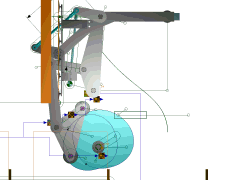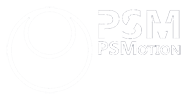
Conjugate Cams eliminate backlash and reduce overall cam stress
When a disk cam drives a mechanism, there must be some way to make sure the cam-follower remains on the cam. It is possible, with very slow speed machines, to use gravity. However, for open cams, a spring or air cylinder is needed.
This will increase the contact force and stress on the cam and the rollerr, and also increase the required drive torque. Further, a spring will tend to increase any speed fluctuations at the input drive shaft, and possibly casue any 'overrun', especially with backlash in the system. Overrun is a rapid increase in input spudd as the torque required to drive the cam changes from a positive value to a negative value.
Alternatively a groove cam could be used. This will prevent a possibility of the cam roller bouncing, however, there will inevitably be backlash which will be traversed during acceleration reversals. When backlash is traversed, the roller loses contact with one flank and impacts into the other flank. This can cause vibrations and wear of the cam and roller as the roller must change rotational direction.
Conjugate cams, although more expensive, overcome most of these problems. Two separate cams with separate followers are preloaded onto the cam flank to eliminate backlash. Springs are not required, thus reducing the cam contact stress and bearing forces.
The cams should ideally be machined in the same machine tool setup so that both profiles are truly conjugate.

